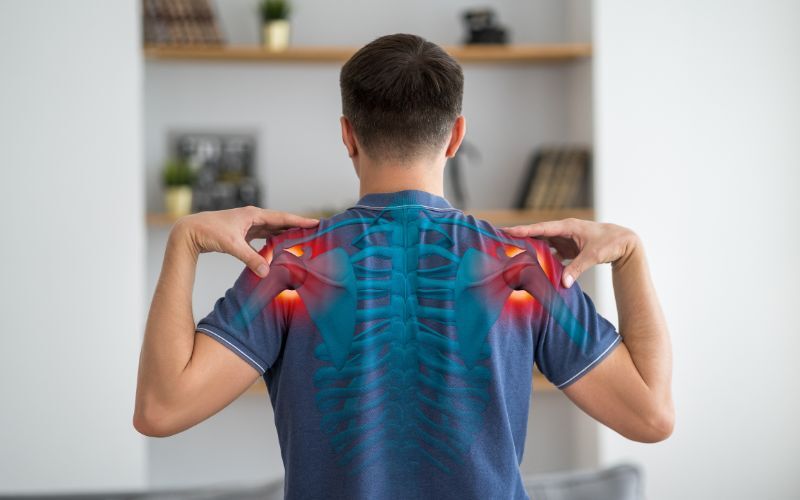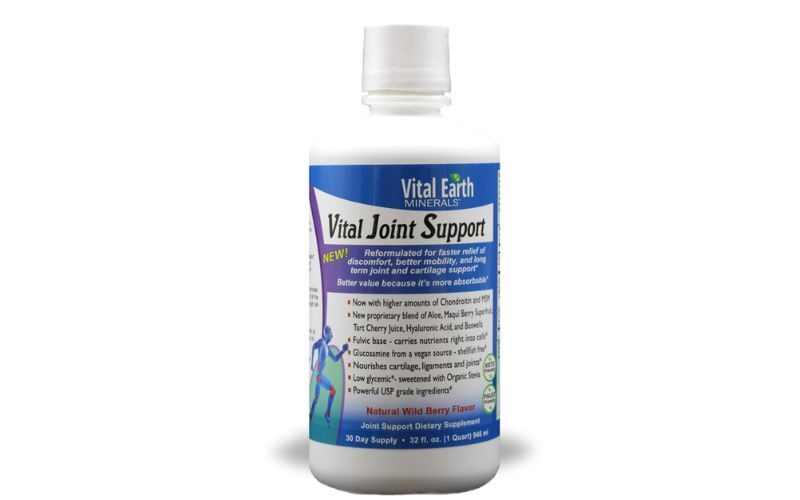Does Low Estrogen Cause Joint Pain?
6th May 2025
Joint pain is commonly blamed on aging, injury, or arthritis. However, in many women who are experiencing perimenopause or menopause, pain can suddenly and mysteriously appear. Low estrogen may be missing if you suffer from unexplained pains, stiffness, or inflammation.
Let's take a look at how estrogen affects joint health and why so many women notice heightened joint pain during the menopause transition.
Unlock joint comfort naturally, thrive with Vital Earth today!
Estrogen's Function In The Body
Estrogen is a broad-spectrum hormone within the body. It's not just well recognized for its function in reproductive well-being. Still, estrogen is equally important in keeping bones strong, modulating inflammation, and preserving joint and muscle tissue. It promotes collagen synthesis, maintains cardiovascular health, and keeps connective tissue flexible and resistant.
When estrogen levels fall during perimenopause and menopause, these systems may become destabilized, resulting in symptoms such as joint pain, stiffness, and reduced mobility.
How Low Estrogen Can Cause Joint Pain
Increased Inflammation: Estrogen maintains the body's immune response and controls inflammation. When estrogen declines, inflammatory markers may increase, causing joint swelling, stiffness, and enhanced sensitivity to pain. Most women experience morning stiffness or pain following periods of inactivity, which can be an early sign of bone weakness.
Alterations in Cartilage and Joint Lubrication: Estrogen also helps to keep joints lubricated with healthy cartilage and synovial fluid. As estrogen levels drop, the joints can feel dry or "creaky," and tendons and cartilage can deteriorate faster, causing pain with movement.
Muscle and Tendon Impact: Decreasing estrogen levels can also impact muscle mass, tendon strength, and ligament flexibility. As these tissues lose strength or elasticity, they can be more strain-resistant, causing shoulder, knee, and neck pain.
Where Joint Pain Typically Occurs During Menopause
Although joint pain can be found anywhere in the body, some locations are more typically involved during the menopause transition:
Hands and fingers – Joint pain in hands, stiffness on waking or following rest
Knees – Walking, stair climbing, or standing for prolonged periods causing pain
Hips – Discomfort or stiffness that is prominent while sleeping or resting
Neck and shoulders – Frequently referred to as poor posture or tension
Lower back – Pain or stiffness, which may be exacerbated with hormonal changes

This discomfort may vary from day to day, and some women have "flare-ups" associated with their hormonal cycle during perimenopause.
Estrogen, Menopause, and Arthritis
It has been questioned by many women if low estrogen itself causes arthritis. Although estrogen itself does not create arthritis, it does affect its progression.
- Osteoarthritis is a degenerative joint disorder that occurs more frequently in postmenopausal women. Estrogen seems to protect cartilage, so its decline may accelerate joint wear and tear.
- Rheumatoid arthritis (RA) is an autoimmune disorder. Estrogen changes may also stimulate immunoreactions, perhaps to account for the increased prevalence of RA in women.
Even in undiagnosed women with arthritis, menopausal joint pain can be similar and profoundly affect the quality of life.
Factors That Can Exacerbate Joint Pain In Menopause
Estrogen loss is at the core of menopausal joint pain, but it's not the sole contributor. Several lifestyle and physiological changes during this time can heighten discomfort:
Weight gain: Excess weight strains joints, particularly in the hips and knees.
Reduced activity: Avoiding movement due to pain can cause muscles to weaken and joints to stiffen.
Poor sleep: Sleep issues are common during menopause and can heighten pain sensitivity. For better sleep, you should use common mindfulness techniques.
Stress: Elevated cortisol levels from chronic stress can increase inflammation and make joint pain feel worse.
Managing Menopause-Related Joint Pain
The good news is that you’re not stuck with this pain. Various treatments and lifestyle changes can ease joint discomfort and improve the quality of life.
Hormone Replacement Therapy (HRT)
HRT restores estrogen levels, decreasing inflammation, promoting joint lubrication, and making stiffness less bothersome. Numerous women notice that joint pain lessens after taking HRT. However, a complete consultation with a physician is necessary.
Exercise and Movement
Stay active. One of the most effective ways of fighting joint pain is to remain active. Low-impact, joint-supporting exercises such as walking, swimming, and yoga can keep joints loose and muscles around the joints strong. Frequent movement can also ensure weight management and stress relief.
Diet and Nutrition
An anti-inflammatory diet will ease joint pain. Eat foods high in omega-3 fatty acids, antioxidants, and essential nutrients. For instance:
- Fatty fish such as salmon or mackerel
- Leafy greens and colorful vegetables
- Berries and citrus fruits
- Whole grains and legumes
- Reducing processed foods, sugar, and alcohol can also decrease inflammation.
Supplements
Some women discover relief from joint pain with targeted supplements. These can include:
As always, consult a healthcare provider before adding supplements to your regimen.
Mind-Body Approaches
Pain is not only physical—it's also emotional. Meditation, deep breathing, acupuncture, and massage therapy can decrease stress and alleviate pain perception. A holistic approach tends to have more favorable long-term results.
When Should You See A Doctor?
If your joint pain is:
- Worsening or persistent
- Associated with swelling, redness, or heat
- Affecting sleep or daily activities
They can assess you for osteoarthritis or autoimmune diseases or prescribe treatments such as physical therapy or HRT.
Final Thoughts
So, does low estrogen lead to joint pain? Yes. For some individuals, the decline in estrogen during perimenopause and menopause results in heightened inflammation, cartilage breakdown, and changes in connective tissue. The outcome? Achy joints, stiffness, and a feeling of being "creaky."
The good news is that this pain is not necessarily permanent. Either through hormone therapy, lifestyle changes, or holistic treatment, there are healthy measures to minimize joint pain and resume comfort.
Learning what's going on in your body is the first step towards regaining control—and resuming as yourself.
Frequently Asked Questions
Can HRT alleviate joint pain during menopause?
Yes, HRT may help alleviate joint pain associated with estrogen loss. Many women find relief from decreased inflammation and enhanced joint function by re-establishing hormone balance.
Is joint pain a typical symptom of menopause?
Yes, it's a common but under-recognized symptom. Joint stiffness, swelling, or pain—particularly in the hands, knees, and shoulders—afflicts many women as a result of the hormonal shifts occurring during menopause.
How long does joint pain during menopause last?
The length of time is different for every woman. Some women have joint pain only for a few months during perimenopause, while others do so throughout postmenopause. Balancing hormone levels, lifestyle, and inflammation may shorten and alleviate the duration of joint pain.
Can joint pain be the first sign of menopause?
Yes, for some women, joint pain can be one of the earliest symptoms of the menopause transition—often before hot flashes or irregular periods begin. If you’re over 40 and experiencing new or unexplained joint discomfort, it may be worth discussing menopause with your doctor.






